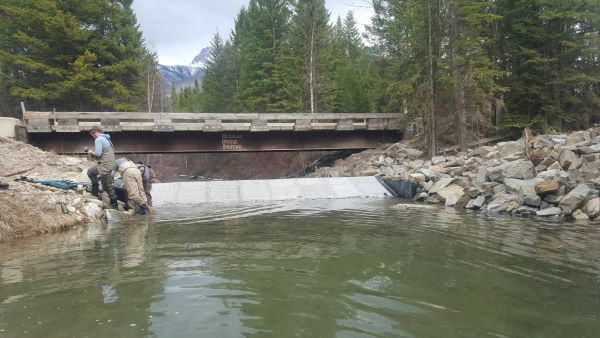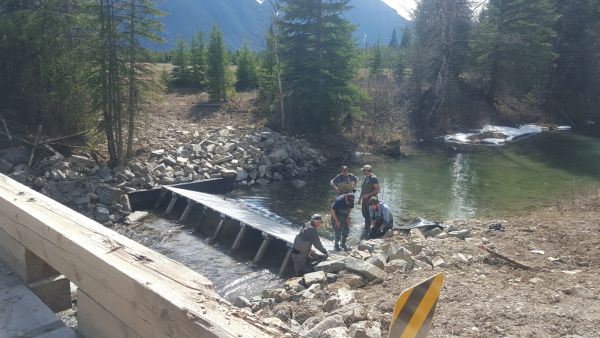Whiteswan Lake trout contributing to hybridization
Whiteswan Lake – stocked with non-native rainbow trout over the past 50 years – had been identified as a local hot spot for contributing rainbow trout genes into the White River’s westslope cutthroat population. Although stocking of reproductive rainbow trout ceased in 2003, feral fish persist and spawn in the White’s tributaries, including Outlet Creek. Rainbow trout hybridization with the river’s westslope cutthroat has been confirmed upstream of the Outlet Creek-White River confluence, with several indications that rainbows (able to swim over the falls on Outlet Creek from Whiteswan Lake) are its leading cause.
Goals of the fish barrier
Whiteswan and Alces (Moose) lakes are popular rainbow trout fisheries in the East Kootenays, with approximately 15,000 angler-days of fishing pressure during the spring, summer and autumn. As set out in the recently developed Whiteswan Lake Provincial Park Management Plan, stakeholders hope the building of the fish barrier will:
- reduce the risks of hybridization to the native White River westslope cutthroat trout, downstream of the park’s Outlet Creek and the Lussier River, from non-native, naturalized rainbow trout emigrating from Whiteswan Lake;
- maintain the popular, high-quality recreational angling in Whiteswan and Alces lakes.
Studies have shown that there is a strong tendency for displaced westslope cutthroat trout to re-colonize a stream if the source of rainbow trout is reduced or removed. With guidance from the management plan, fisheries biologists from the provincial Ministry of Forests, Lands and Natural Resource Operations will use licenced anglers to further remove colonized rainbow trout from Outlet Creek by letting them fish for, and retain, rainbows below the falls between April 1 and July 31.


Installing and operating the fish barrier
The barrier panels were first installed in April of 2016. Volunteers from the St. Mary Fly Club and the Canal Flats Wilderness Club have been instrumental in maintaining the barrier, as it requires daily (or 2 to 3 times a day) cleaning of debris. The annual spawning counts in Outlet Creek in the first year of operation (April to May 2016) showed that the run was about 3 weeks early due to a very warm March and April. Spawners were observed upstream of the barrier during the run, indicating that spawners were unable to move downstream of the barrier. Once fry are observed in the creek (mid June), finer mesh panels are installed. Volunteers continue to maintain the barrier until October, when the panels are removed until the following spring.
The $170,000 barrier cost was funded by the Freshwater Fisheries Society of BC. This exciting and innovative project to conserve to westslope cutthroat trout is thanks to the hard work, dedication, and partnership of the Ktunaxa First Nation, the Ministry of Forests, Lands and Natural Resource Operations, and the participants in the Whiteswan Lake Fisheries Plan.
Author: Dave Wei and Suzanne Clouthier